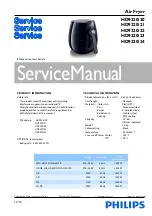
FTS Systems LyoStar™ 3
Praxair’s ControLyo™ Nucleation On-Demand
Technology
Rev 006, 01/14
51
© SP Scientific 2014
Cool product containers to the target nucleation temperature (
e.g.
, 1 to 2 °C
5.
below the thermodynamic freezing point of your product). The shelf
temperature should be set at a temperature such that the product is
maintained below the target nucleation temperature during depressurization.
Note: The pressurization and cooling events do not need to follow a certain sequence
prior to the depressurization step that induces nucleation (e.g., pressurization followed
by product cooling or product cooling followed by pressurization). To optimize batch
uniformity, it is generally recommended that product temperatures and chamber
pressure be approximately equilibrated at the desired values prior to depressurization.
Allow samples to cool until warmest sample temperature is -1 °C or colder, as
6.
dictated by the thermodynamic freezing point of your product. To improve
nucleation uniformity, hold the shelf temperature for a minimum of 60 minutes
to achieve temperature equilibration in all samples.
Depressurize the chamber to approximately 1 to 2 psig to induce nucleation.
7.
To avoid possible back-flow of material from the environment into the product
chamber, it is recommended that you close the valves through which the
depressurization is achieved at a positive chamber pressure (
i.e.
, final
pressure in the product chamber is greater than ambient pressure). Praxair’s
ControLyo™ Nucleation On-Demand Technology is considered effective
when all product containers within the lyophilizer nucleate and begin freezing
within seconds of triggering the depressurization event. The rate and
magnitude of the pressure drop are important factors in determining the
efficacy of Praxair’s ControLyo™ Nucleation On-Demand Technology.
Praxair’s ControLyo™ Nucleation On-Demand Technology is generally more
effective for greater and more rapid pressure drops.
The product temperature profile following the nucleation event can impact the
8.
final ice crystal structure. It is generally recommended that you maintain the
product containers at the target nucleation temperature for additional time
after nucleation to allow the ice crystals to grow larger. The optimal post-
nucleation shelf cooling profile for a given product should be determined via
experiments.
Reduce shelf temperature to complete the freezing step.
9.
Complete the freeze-dry cycle, monitoring critical cycle characteristics of the
10.
drying phase.
Содержание LYOSTAR 3
Страница 1: ...LYOPHILIZER OPERATOR S MANUAL FTS SYSTEMS LYOSTAR 3 RESEARCH DEVELOPMENT PILOT SCALE FREEZE DRYER...
Страница 2: ......
Страница 6: ...iv Rev 006 01 14 SP Scientific 2014...
Страница 10: ...Contents FTS Systems LyoStar 3 viii Rev 006 01 14 SP Scientific 2014...
Страница 18: ...Getting Started FTS Systems LyoStar 3 8 Rev 006 01 14 SP Scientific 2014...
Страница 30: ...Operating your Lyophilizer FTS Systems LyoStar 3 20 Rev 006 01 14 SP Scientific 2014...
Страница 36: ...Liquid Nitrogen Trap FTS Systems LyoStar 3 26 Rev 006 01 14 SP Scientific 2014...
Страница 48: ...Sample Extractor Assemblies FTS Systems LyoStar 3 38 Rev 006 01 14 SP Scientific 2014...
Страница 52: ...Stoppering FTS Systems LyoStar 3 42 Rev 006 01 14 SP Scientific 2014...
Страница 56: ...Shelf Latching FTS Systems LyoStar 3 46 Rev 006 01 14 SP Scientific 2014...
Страница 64: ...Praxair s ControLyo Nucleation On Demand Technology FTS Systems LyoStar 3 54 Rev 006 01 14 SP Scientific 2014...
Страница 74: ...Appendix A Sample Recipe FTS Systems LyoStar 3 64 Rev 006 01 14 SP Scientific 2014...
Страница 80: ...Appendix C Stainless Steel Cleaners FTS Systems LyoStar 3 70 Rev 006 01 14 SP Scientific 2014...
Страница 81: ......
















































